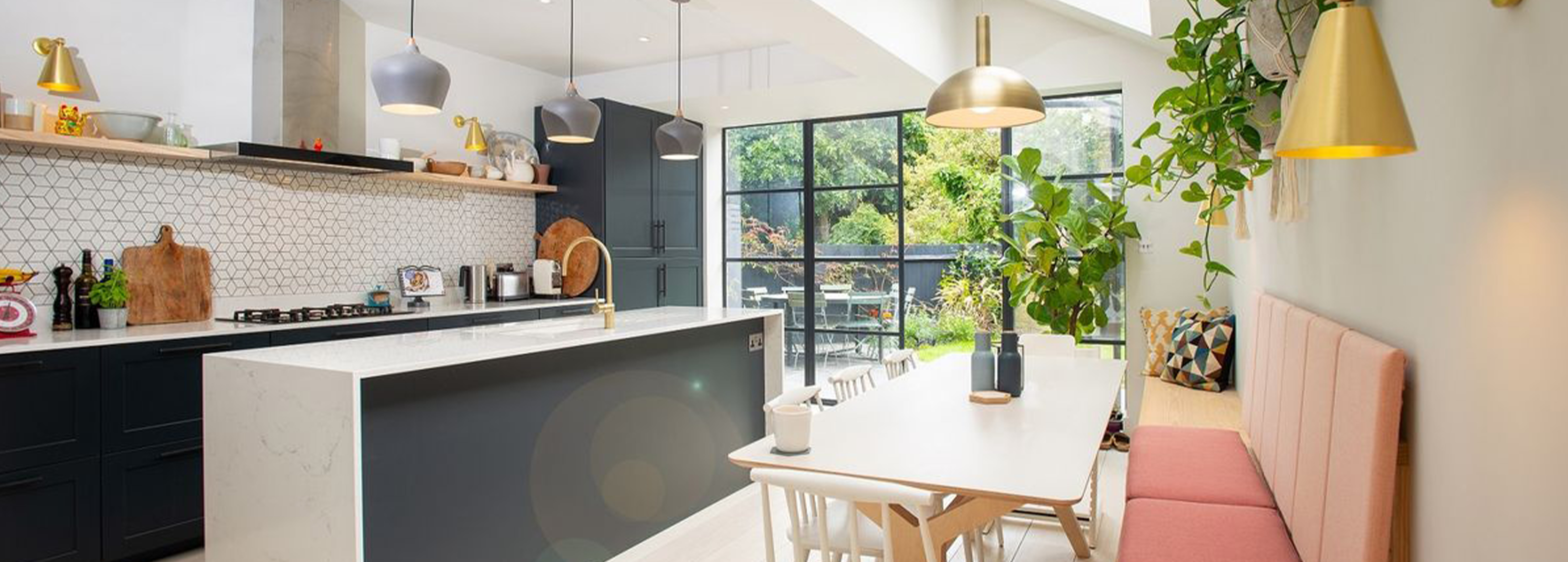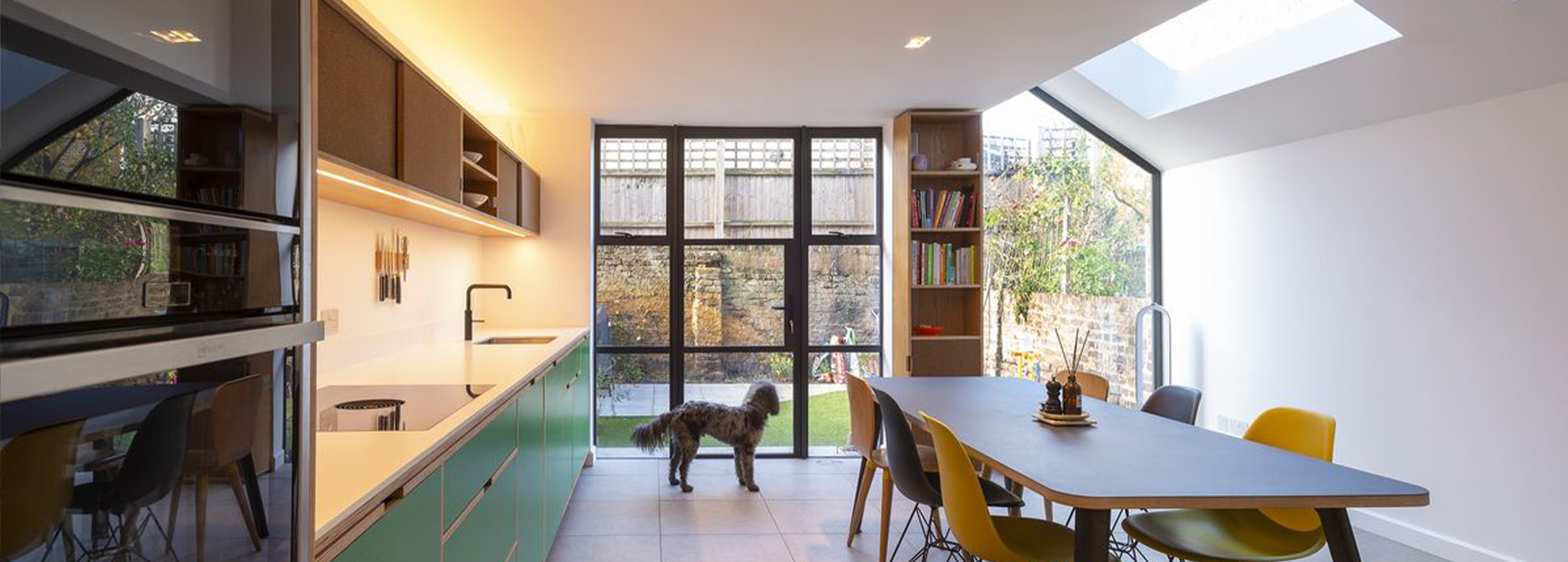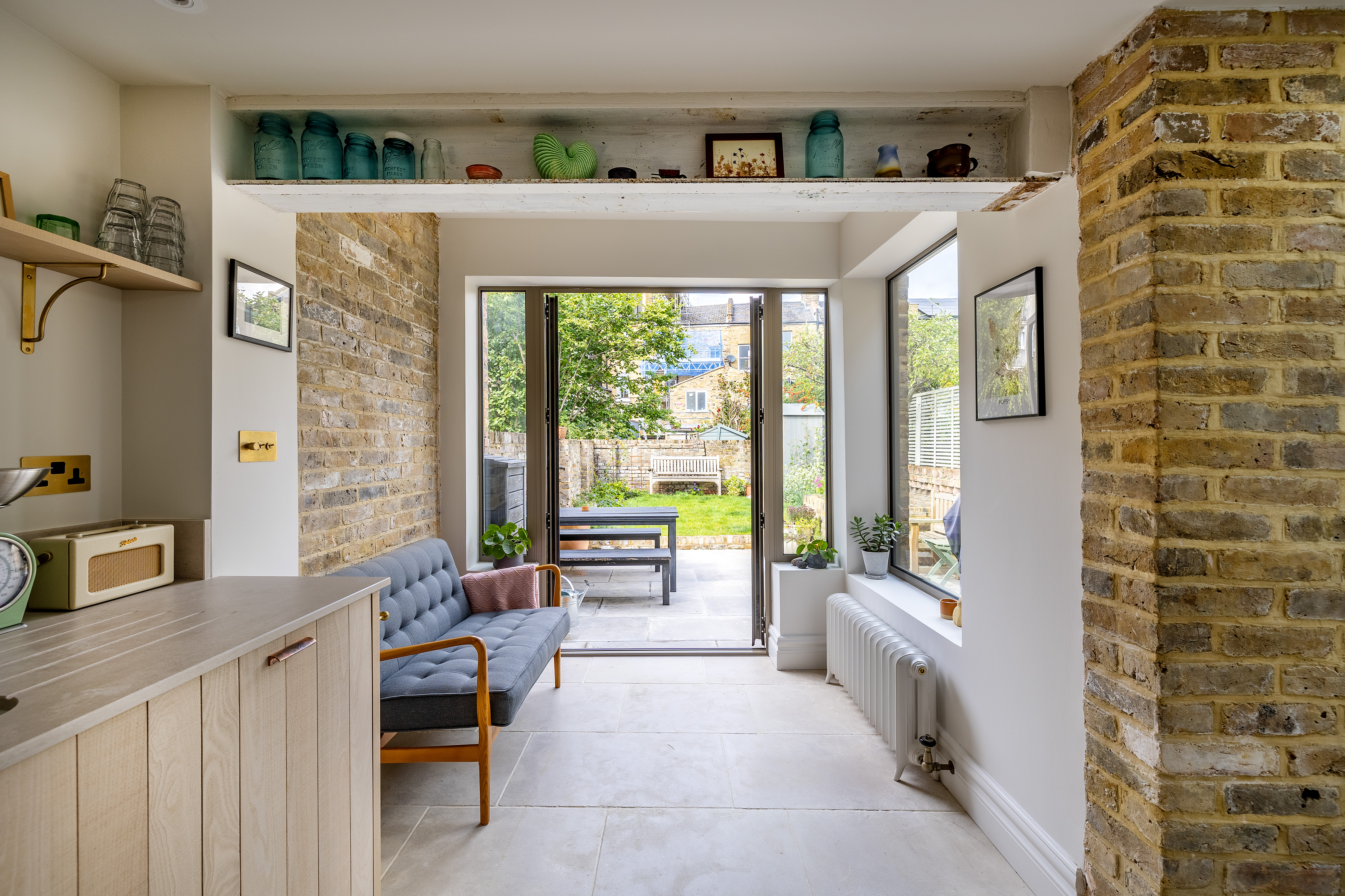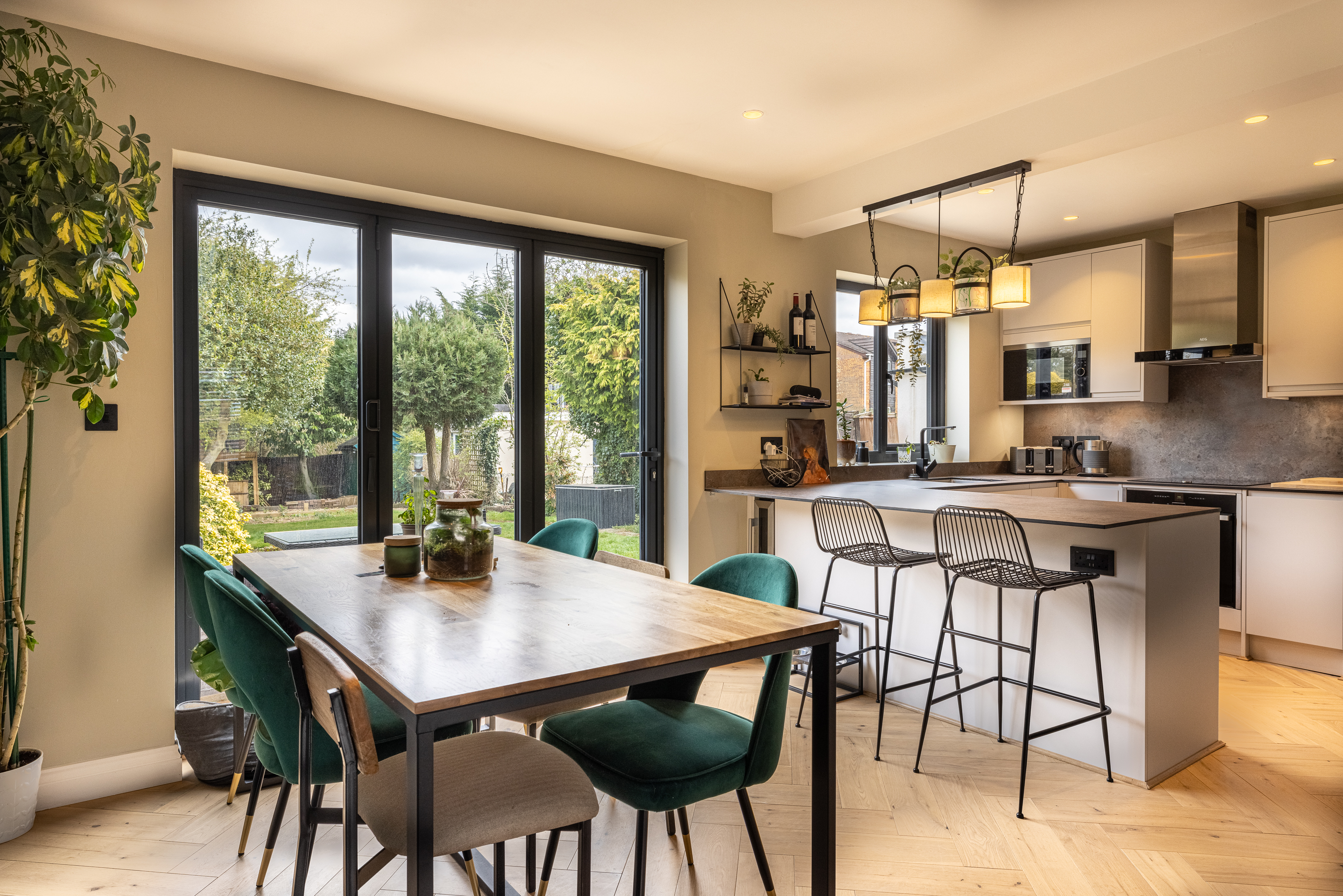Quick Guide to Adding a Side Return Extension to Your Victorian Terrace
- 07-07-23
- min read
- Blog
Side return extensions are a wonderful way to increase a Victorian terrace’s living space.
They utilise the narrow and often underused strip of garden or backyard space that runs along the side of the house, known as the 'side return'.
Side returns are very typical on urban Victorian homes. If you have one, you’ll usually find it at the back of your home between the kitchen, living room, and sometimes utility rooms or bathrooms. It’s usually paved or tiled over and is often used as a storage area or dumping ground for bins, bikes, etc.
Extending into the side return is an established method of unlocking new space for your Victorian terrace. The side return is right there waiting for you to turn it into a valuable, liveable space.
This is a guide to side return extensions for Victorian terraces.
A side return extension is a type of home extension that extends into the side alleyway of a terraced or semi-detached house.
Many Victorian and period homes feature side returns that remain largely unused. You might use yours as a patio or storage area or for nothing at all.
Building a side return extension usually involves knocking through the existing rear wall, building out to the side boundary, and then installing large glass doors or skylights to bring in natural light.

Above: You can see where the old side return was towards the right of this extension in SW2.
The extension typically doesn't significantly affect the garden's size and is a great way to maximise your indoor living space.
Victorian terraces often have an underused alleyway, or 'side return', at the rear of the house.
These areas, typically accessed via a kitchen or living room door, are often underutilised and thus provide a perfect opportunity for extension.
Extending into the side return can drastically increase your kitchen or living area, making your property feel more spacious and comfortable. It’s somewhat of the same principle as a loft conversion – the space is already there, waiting to be transformed.
While embarking on a side return extension requires a significant upfront investment, it’ll at least partially pay for itself from any eventual sale of your home.
Extensions are typically estimated to boost the value of a property by around 5% to 10% at a minimum. However, this can rise to over 20% in high-demand areas, depending on various factors such as the quality of the extension and the added functionality it provides.
However, we need to consider that the value of a 5% to 20% uplift varies widely. In 2022, the average house price in the UK was £278,000 – 20% of this is around £55,000.
In some London boroughs, the average home is worth vastly more than that, which means London homeowners may benefit more from any uplift in their home’s value. For example, by some estimates, an extension in Kensington and Chelsea is worth something like £450,000!
Of course, increases in home value aren’t everything. Research from Zopa suggested a 65% majority of those extending their property plan to remain there for five years or more, whereas 12% planned to sell soon.
Let’s focus on the many benefits of side return extensions that homeowners can unlock in the immediate term.
Additional Space
Side return extensions can significantly increase your living space, providing extra room for a larger kitchen, dining area, or living room.
Additional space is valuable and enables you to experiment with new room configurations. It might make the difference between staying in your property and relocating.

Above: This gorgeous side return extension in N4 creates an expansive kitchen-diner
Natural Light
By incorporating impressive skylights or large glass doors, side return extensions can enhance the natural light in your home, making the space feel brighter and larger. Some Victorian terraces tend to be dimly lit, so this is a welcome benefit.
Improved Layout
These extensions offer the opportunity to create an open-plan living area, attractive garden room, home office or other new layout configurations, providing a modern update to the traditional Victorian layout.
Design Potential
Designing a new space created by a side return extension is exciting. Since you’re already knocking through walls, it’s the ideal opportunity to re-design other aspects of your ground floor.
For example, many choose to freshen up the space with modern fixtures, new kitchen appliances, furniture, etc. The extra space is a blank canvas that allows your imagination to run free with new ideas.

Above: This side return in SW12 incorporates a striking slanted ceiling with skylights.
Homeowners have certain rights to extend their properties under Permitted Development Rights (PDRs). PDRs essentially allow homeowners to bypass the formal planning permission procedure, subject to various rules and conditions that mainly relate to the type of property and size of the extension.
While side returns are generally compact enough to fall under PDRs, there are a couple of deal breakers, such as being limited to extend to a maximum of 3m. Most side returns are longer than that.
However, with careful planning, it’s sometimes possible to construct under PDRs. Even if you do need Planning Permission, it’s certainly not impossible to extend.
Side return extensions are an established type of extensions for urban properties, and the planning authorities regularly permit them with few snags.
This is where the expertise of professional extension design services like Design Team helps, as we’re highly familiar with the planning process.
If your side return extension involves work on a wall shared with a neighbouring property, you'll need a Party Wall Agreement.
The Party Wall Act also establishes rules for work to or near shared boundary fences between you and your neighbour, so even if there are no physical walls interfering with the work, there’s a chance that you’ll need consent.
Obtaining consent is usually straightforward. If you can’t come to a mutual agreement informally, there’s a surveying process for obtaining permission regardless of your neighbour’s opinion.
Of course, coming to a mutual agreement is much preferred, and there’s usually no issue in doing so.
The cost of a side return extension can vary, but as a general guide, you can expect to pay between £1,500 and £2,250 per square metre.
The estimated cost for a 20m² side return extension could be anywhere from £30,000 to £45,000.
Remember, this doesn't include the cost of interior fixtures, fittings and decoration.
It’s worth mentioning that, in London, the cost per square metre is typically higher, but the ROI of the build is also higher due to the additional value of extra space.
The possibilities for your side return extension are virtually endless. Many homeowners choose to use the new space to expand their kitchen, dining and living areas. You can add new seating areas, kitchen islands, bench seating, and more.
Here are a few popular ideas for how to use your side return extension:
Expanded Kitchen
Since side returns are often naturally positioned near the kitchen, many choose to use the additional space for a larger kitchen, perhaps with a kitchen island or a dining area.
Victorian terraces often have cramped kitchens – side return extensions are superb for opening them up and upgrading the space.
Open-Plan Living Space
Creating an open-plan kitchen and living space that somewhat blends the kitchen and living areas is possible.
This is perfect for creating an expanded family space or for entertaining. Side returns create considerable new space for extra seating, kitchen islands, bench seating and more.
Home Office
Some of the new space created by a side return extension could be converted into a home office. Large doors and skylights ensure plenty of natural light, which is ideal.
Garden Room
Large doors, glass-panelled walls and skylight or lantern windows seamlessly connect your interior with your outdoor garden area, creating a wonderful space for relaxation and entertaining.
This is one of the chief benefits of a side return extension – they’re so bright and airy. This makes the existing space feel a lot larger than it did pre-extension.
A side return extension is a great way to maximise the potential of your Victorian terrace. It adds valuable space, enhances the property's aesthetics and can significantly increase its value.
Side returns leverage disused space you already have – it’s no wonder they’re one of the most popular and successful extension types for Victorian terraced homes.
As with all significant home improvements, proper planning and professional execution are key to achieving a successful outcome.
Design Team has successfully brought numerous side return projects to life. We offer design, drawings and planning packages for side return extensions.
Head here for more information, or book a free consultation here.
Book a free Design Consultation with one of our team to discuss your project in more detail.

19-02-24 5

19-02-24 5
.jpg)
17-01-24 5